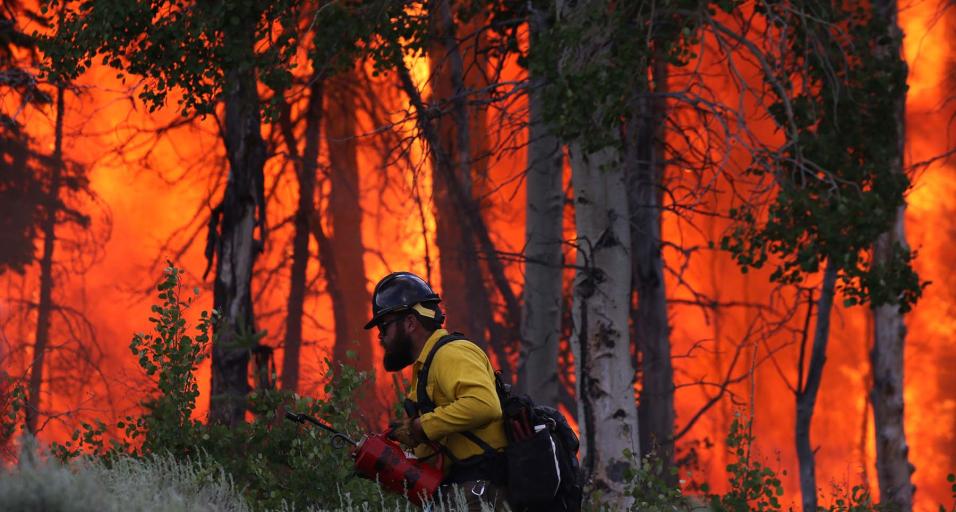This July, Game and Fish worked on a prescribed fire in cooperation with the Bureau of Land Management (BLM) at Pine Grove in the Wyoming Range. Prescribed burns like these are an important tool for habitat management for benefit mule deer and other species. The goal of the Pine Grove prescribed fires was to set back conifer encroachment on aspens and promote aspen regeneration. Planning for this fire began two years ago when many trees were cut left to dry out, creating a fuel source to torch the trees during this generally green/wet time of year.
Fires are generally good for plant communities and the wildlife that depends on them. Plant life begins regrowing within weeks of a fire and these new plants are found to have higher crude protein content than adjacent unburned plants.
"Some plants, such as aspen, actually depend on periodic fires to remove the competition of conifer trees. When conifers are removed, aspen will vigorously resprout and begin to provide vital food resources for species such as mule deer and elk," said Jill Randall, Game and Fish Terrestrial Habitat Biologist.
Aspen provides critical habitat for many species of wildlife in the form of both food and cover.
"Unfortunately, it is estimated that we have lost over half of the historic aspen stands found in the Rocky Mountain West due to fire suppression over the past century. While we humans may think a burned forest is unsightly, or even decimated, it generally signals rebirth of the plant community which is a welcome sight for most wildlife," said Randall.
Better summer forage as a result of fires playing their natural role in the ecosystem can result in more fat accumulation on does and cows which generally results in more young successfully joining the herd in future years.
Prescribed fires help aspen habitat regrow
Wyoming Game and Fish (307) 777-4600

